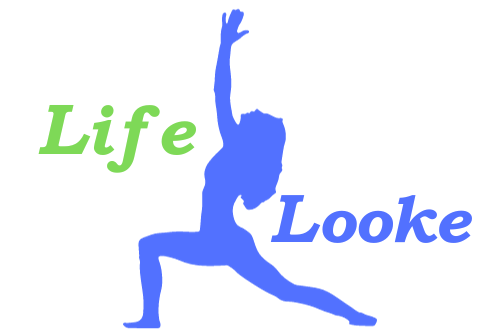Meditation and mindfulness are two famous ideas that are frequently utilized reciprocally, yet they have particular contrasts. The two practices have their foundations in old Eastern customs and have acquired far-reaching prevalence in the West as a manner to diminish pressure, further develop the centre, and advance generally speaking prosperity. While contemplation is a more extensive term that incorporates different strategies for calming the psyche and accomplishing a higher condition of cognizance, care is a particular kind of reflection that includes focusing on the current second without judgment. In this blog, we will investigate the distinctions between Meditation and mindfulness, and how each training can help your psychological and profound wellbeing.
Meditation Defined
Contemplation is a training that includes preparing the brain to concentrate and divert considerations to accomplish a condition of quiet and mental clearness. A strategy has been utilized for millennia in different strict and profound customs, as well as in current common settings. Reflection can take many structures, including breathing activities, representation, mantra reiteration, and body examination. The objective of contemplation is to develop a feeling of internal harmony, focus, and mindfulness. It is often utilized as an instrument for pressure decrease, unwinding, and self-awareness. Through normal reflection practice, people can figure out how to deal with their viewpoints and feelings all the more successfully and gain a more prominent feeling of command over their psychological and profound states. For more health information visit Life Looke.
Origins: Ancient practices with varied roots
Reflection has a rich and fluctuating history that traverses across various societies and customs. Its starting points can be traced back to old human advancements in Asia, like India, China, and Japan. In India, the mirrored image has been a focal exercise in Hinduism, Buddhism, and Jainism for millennia. It is referenced inside the Vedas, the maximum seasoned Hindu sacred writings, and is an important part of the Eightfold Way in Buddhism. In China, contemplation has been a significant piece of Taoism and Confucianism, and it is likewise a basic practice in Chinese combative techniques and medication. In Japan, reflection has been rehearsed in Harmony Buddhism and different types of Buddhism for quite a long time.
Reflection has likewise been rehearsed in different regions of the planet, like in the Center East, Africa, and the Americas. For instance, Sufi Muslims have been rehearsing contemplation as Dhikr, which includes the redundancy of God’s name. In Africa, reflection has been utilized in conventional mending practices and profound ceremonies. In the Americas, Local American clans have been rehearsing reflection as vision missions and sweat lodges.
Today, contemplation has become a famous practice within the West, with many individuals integrating it into their everyday schedules for its diverse meditaton advantages. It has been incorporated into special settings, like colleges, emergency clinics, and operating environments, and is often knowledgeable as a mainstream practice that is open to people of all foundations and convictions. Despite its changed roots, reflection stays an integral asset for self-disclosure and self-improvement, and it proceeds to develop and adjust to the requirements of contemporary society.
Types: Includes Transcendental, Zen, and more
There are various sorts of contemplation rehearses, each with its methods and objectives. The absolute most notable sorts of contemplation include:
Supernatural Reflection (TM)
Supernatural Contemplation is a procedure where experts rehash a mantra quietly to accomplish a condition of loosened-up mindfulness. It is known for its effortlessness and availability, making it famous among fledglings and experienced meditators the same.
Harmony Contemplation (Zazen)
Harmony contemplation, or Zazen, is a type of reflection rehearsed in Harmony Buddhism. It includes sitting in a particular stance and zeroing in on the breath or a koan (an enigma or question) to develop care and understanding.
Care Contemplation
Care contemplation is a training that includes focusing on the current second without judgment. It frequently finished by zeroing in on the breath, body sensations, or outside boosts to foster mindfulness and acknowledgement of one’s viewpoints and feelings.
Cherishing Thoughtfulness Reflection (Metta)
Cherishing Thoughtfulness Contemplation, or Metta, is a training that includes developing sensations of adoration, sympathy, and generosity towards oneself as well as other people. It intends to advance close-to-home energy and association with others.
Directed Contemplation
Directed reflection includes adhering to the guidelines of an educator or recorded sound to lead you through a contemplation practice. It tends to be useful for amateurs or those searching for explicit direction or unwinding procedures.
Body Output Contemplation
Body Output Contemplation includes efficiently zeroing in on various pieces of the body, seeing sensations, and delivering pressure. It is frequently utilized for unwinding, stress decrease, and expanding body mindfulness.
These are only a couple of instances of the different scopes of reflection rehearses accessible. Each type offers exceptional advantages and ways to deal with developing care, unwinding, and mindfulness. Trying different things with various kinds of contemplation can assist you with finding training that impacts you and supports your prosperity.
Techniques: Involves specific methods like mantras and focus
Reflection procedures are explicit strategies used to develop a thoughtful perspective. Here are a few normal methods:
Mantras
Mantras are words or expressions that rehashed quietly or resoundingly during contemplation. They can be conventional, like the Om mantra in Hinduism, or individual, for example, an expression that has individual importance to the professional. Rehashing a mantra can assist with centring the brain and create a feeling of quiet.
Relaxing
Zeroing in on the breath is a typical method in many types of contemplation. By focusing on the vibe of the breath moving all through the body, the psyche turns out more engaged and present. This strategy can be utilized to develop care, diminish pressure, and advance unwinding.
Representation
Representation includes making a psychological picture or scene during contemplation. This can be a tranquil spot, an image, or an object of concentration. Perception can help the brain unwind and concentrate and can be utilized to develop positive feelings or aims.
Body Output
Body filter contemplation includes efficiently zeroing in on various pieces of the body, seeing sensations, and delivering pressure. This procedure can assist with advancing unwinding, decreasing pressure, and incrementing body mindfulness.
Adoring Consideration
Adoring benevolence contemplation includes developing sensations of affection, empathy, and generosity towards oneself as well as other people. This procedure should be possible by rehashing expressions of cherishing generosity or imagining oneself or others as beneficiaries of adoration and graciousness.
Reciting
Reciting includes rehashing a word, expression, or sound resoundingly during reflection. This method utilized to concentrate the psyche, create a feeling of quiet, and develop an association with a higher power or profound custom.
Goals: Often about deep relaxation or altered states
The objectives of reflection can shift contingent upon the kind of training and the singular’s aims. In any case, there are a few shared objectives that many individuals look for through contemplation:
Profound Unwinding
One of the maximum famous goals of mirrored image is to accomplish a circumstance of profound unwinding. By calming the mind and zeroing in on the modern 2d, contemplation can help with diminishing pressure, anxiousness, and pressure in the frame. This can prompt a feeling of quiet and unwinding that can work on general prosperity.
Further developed Concentration
Reflection can assist with further developing concentration and fixation by preparing the brain to remain present and keep away from interruptions. This can be gainful for individuals who battle with consideration deficiency issues, as well as the people who essentially need to work on their capacity to focus.
Profound Equilibrium
Reflection can assist with developing close-to-home equilibrium by advancing mindfulness and acknowledgement. By noticing considerations and feelings without judgment, contemplation can assist with lessening pessimistic idea examples and increment sensations of prosperity.
Otherworldly Development
Contemplation has been applied for millennia as a device for profound development and self-disclosure. By calming the brain and associating with a higher power or internal insight, contemplation can assist people with developing their profound practice and gain a more prominent feeling of direction and significance throughout everyday life.
Changed Provinces of Awareness
A few types of contemplation expect to initiate modified conditions of cognizance, like profound conditions of unwinding, joy, or greatness. These encounters can be significant and groundbreaking and can prompt a more prominent feeling of interconnectedness and solidarity with the world.
Worked on Actual Wellbeing
Contemplation displayed to various actual medical advantages, for example, bringing down circulatory strain, decreasing persistent agony, and helping the safe framework. By decreasing pressure and advancing unwinding, contemplation can assist with working on by and large well-being and prosperity.
What is Mindfulness?

Care is a condition of cognizant mindfulness and non-critical acknowledgement of the current second. It includes focusing on the current second with interest and transparency, without becoming involved with considerations, feelings, or interruptions. Care can be drilled through different methods, like reflection, yoga, or other insightful practices.
The objective of care is to develop a more prominent feeling of mindfulness and presence in day-to-day existence. By rehearsing care, people can figure out how to notice their considerations and feelings without judgment and foster a more noteworthy feeling of command over their psychological and profound states. This can prompt a more noteworthy feeling of prosperity, diminished pressure and uneasiness, and further developed concentration and focus.
Care has its foundations in old Eastern profound customs, like Buddhism and Taoism, however has acquired notoriety in the West as of late as a mainstream practice for working on mental and actual wellbeing. It has been integrated into different settings, like schools, emergency clinics, and work environments, and has been displayed to have various advantages for both the psyche and the body.
Meditation vs. Mindfulness: Goals, methods, and outcomes
While Meditation and mindfulness are firmly related, they have unmistakable contrasts in objectives, strategies, and results.
Objectives
The objective of reflection is to prepare the psyche to concentrate and calm the contemplations, frequently through unambiguous procedures, for example, mantra redundancy, breath counting, or perception. A definitive objective of reflection is to accomplish a condition of profound unwinding, internal harmony, and otherworldly development.
The objective of care is to develop non-critical mindfulness and acknowledgement of the current second, frequently through focusing on the breath, body sensations, or outside boosts. A definitive objective of care is to foster a more prominent feeling of mindfulness and presence in day-to-day existence, which can prompt diminished pressure, nervousness, and profound reactivity.
Techniques
Contemplation includes explicit strategies that frequently polished temporarily, for example, 10-20 minutes out of each day. These methods can incorporate mantra reiteration, breath counting, representation, or body checks.
Care, then again, drilled over the day, at whatever second or movement. It includes focusing on the current second with interest and receptiveness, without becoming involved with considerations, feelings, or interruptions. Care rehearsed through proper reflection rehearses, casual care works, or regular exercises like eating, strolling, or finishing errands.
Results
The results of Meditation and mindfulness can change contingent on the individual and the particular practice. Be that as it may, a few normal results of reflection include:
- Profound unwinding and stress decrease
- Further developed concentration and focus
- Expanded mindfulness and self-guideline
- Worked on close-to-home guidelines and decreased profound reactivity
- Expanded feeling of inward harmony and otherworldly development
A few normal results of care include:
- Diminished pressure and tension
- Worked on close-to-home guidelines and diminished profound reactivity
- Expanded mindfulness and self-guideline
- Further developed concentration and focus
- Expanded feeling of presence and mindfulness in day-to-day existence
Bringing Them into Your Life
If you’re keen on bringing Meditation and mindfulness into your life, there are multiple ways of getting everything rolling:
- Find a contemplation or care practice that impacts you. There are various kinds of Meditation and mindfulness rehearses, so it’s essential to find one that impacts you and meets your requirements. You might need to attempt different practices to see which one feels generally good and compelling for you.
- Put away opportunity for ordinary practice. Both Meditation and mindfulness require customary practice to see benefits. Attempt to save a particular time every day for your training, regardless of whether it’s only for a couple of moments. Consistency is critical.
- Make an agreeable and calm space. Find a peaceful and agreeable space where you can rehearse without interruptions. This can be a devoted reflection room or essentially a side of your room or lounge.
- Utilize directed contemplations or care works out. On the off chance that you’re new to contemplation or care, directed reflections or care activities can be useful. There numerous assets accessible web-based, including applications, sites, and recordings.
- Be patient and delicate with yourself. Meditation and mindfulness rehearsed which requires tolerance and self-sympathy. Encountering interruptions or troublesome feelings during your practice is typical. Just recognize them and delicately take your consideration back to the current second.
Tips for beginners in meditation and mindfulness
On the off chance that you’re new to Meditation and mindfulness, here are a few hints to assist you with getting everything rolling:
- Begin little. Start with short reflection or care meetings, for example, 5-10 minutes out of each day. As you become more agreeable, you can continuously expand the length of your training.
- Track down an agreeable position. Sit in an agreeable position, either on a pad or seat, with your back straight and your feet immovably on the ground. You can likewise rest, however, be mindful so as not to nod off.
- Center around your breath. Focus on the impression of your breath moving all through your body. Notice the ascent and fall of your chest or mid-region. On the off chance that your psyche meanders, delicately take your consideration back to your breath.
- Be caring to yourself. It’s typical for your brain to meander during contemplation or care practice. At the point when this occurs, essentially recognize the idea and tenderly take your consideration back to the current second.
- Practice consistently. Consistency is key to Meditation and mindfulness. Attempt to rehearse consistently, regardless of whether it’s only for a couple of moments.
Investigate various methods. There are various Meditation and mindfulness strategies, so don’t hesitate for even a moment to investigate and find what turns out best for you. A few famous methods incorporate centred consideration, body filter, cherishing thoughtfulness, and care-based pressure decrease (MBSR).
Conclusion
Meditation and mindfulness are strong practices that can carry various advantages to our lives. By developing a standard contemplation or care practice, we can foster more prominent mindfulness, concentration, and prosperity. While Meditation and mindfulness frequently utilized conversely, they particular contrasts. Meditation is a more extensive term that alludes to various practices pointed toward calming the brain and accomplishing a higher condition of cognizance. Care, then again, is a particular kind of reflection that includes focusing on the current second with interest and non-judgment. Both Meditation and mindfulness rehearsed in various ways, from formal contemplation meetings to casual care practices over the day. By integrating these practices into our regular routines, we can foster a more prominent feeling of presence, smoothness, and versatility despite life’s difficulties.
On the off chance that you’re new to Meditation and mindfulness, beginning little and being reliable are vital. Track down an agreeable position, centre around your breath, and be thoughtful to yourself when your psyche meanders. Investigate various methods and find what turns out best for you. With customary practice, you can develop a more prominent feeling of mindfulness, presence, and prosperity in your life.

